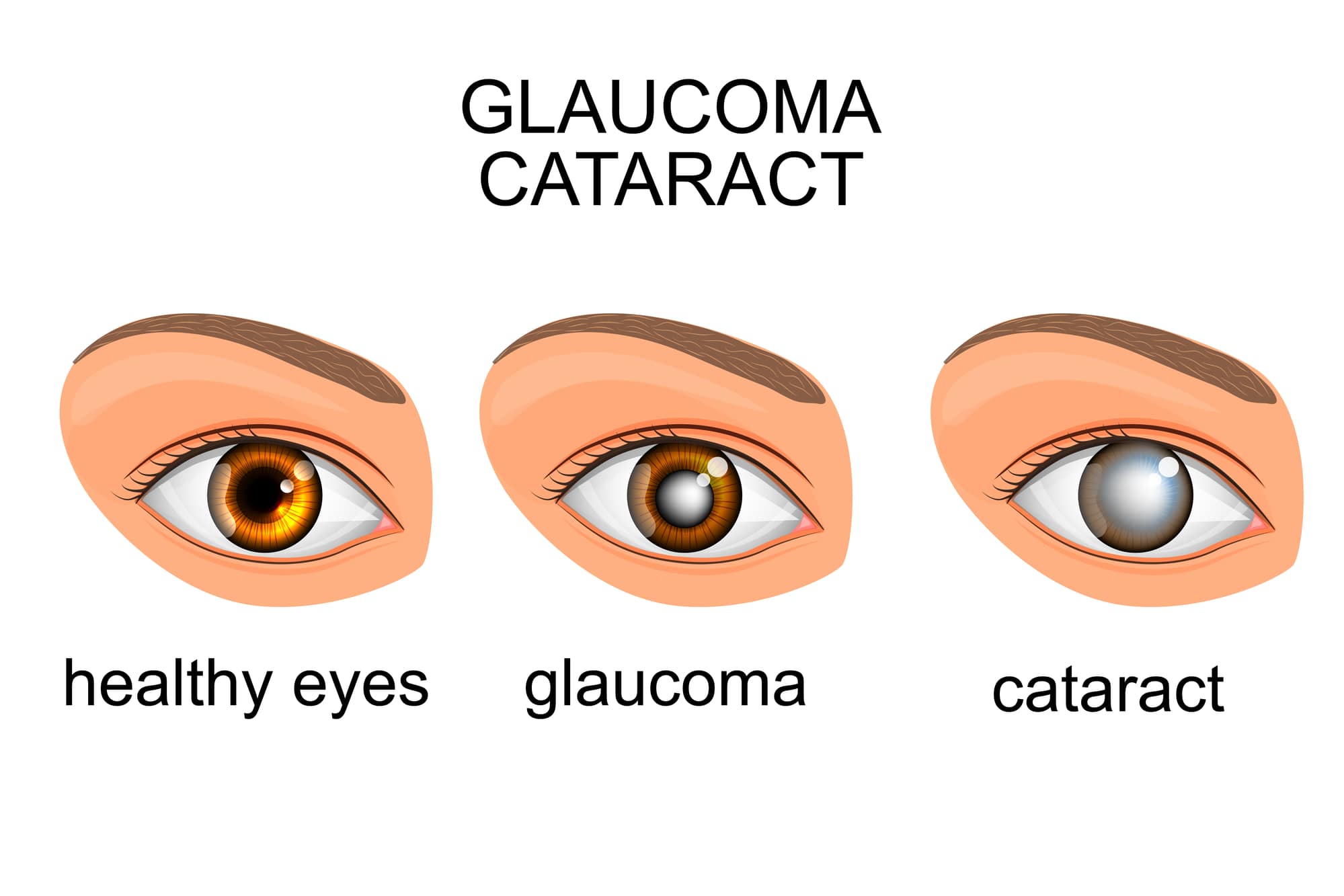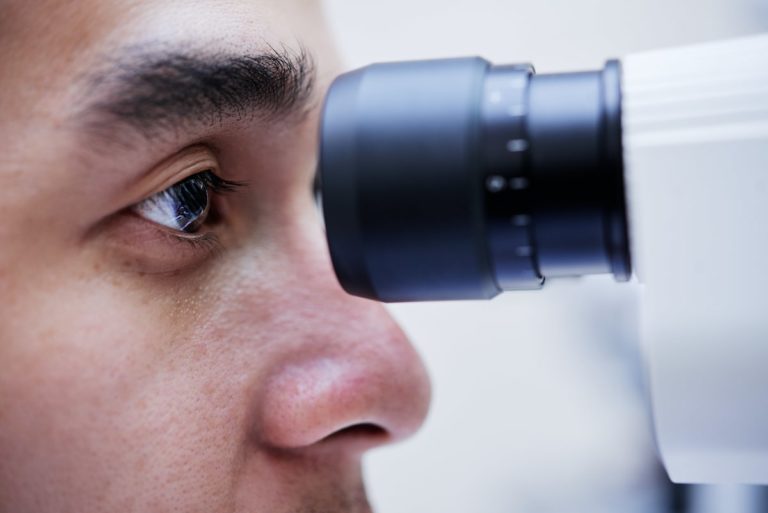As we age, our eyes, like any other part of the body, become susceptible to disease. The most common vision-related problems in older adults are glaucoma and cataracts. In fact, cataracts are the leading cause of blindness worldwide. World Health Organization estimates that cataracts cause 51% of the world’s blindness. About 80 million people globally in 2020 have glaucoma, and this number is projected to increase to over 111million by 2040.
Despite the prevalence of these two eye disorders, few people understand how they differ and affect eyesight. Let’s take a closer look at the basics of glaucoma and cataracts, including their similarities, differences, and the threats they pose to your vision if left untreated.
What’s Glaucoma?
Glaucoma is a group of eye disorders caused by too much fluid pressure inside your eye, leading to slow vision loss and loss of optic nerve tissue, and if left untreated, it can cause blindness. Your eye is filled with a fluid known as aqueous humor; it flows through a small opening and a meshwork drainage system. Your body refreshes the fluid every day to maintain a steady pressure gradient inside your eyeball.
If something blocks the drainage system, a pressure buildup in your eyeball will develop; known as intraocular pressure. As the eye pressure increases, it damages the optic nerve, which is essential for transferring visual information to the brain, causing vision loss.
There’re Two Types of Glaucoma
Open-angle glaucoma
- With this type of glaucoma, you will have minor symptoms or no symptoms at all. In most cases, you won’t know you have glaucoma until you develop major vision loss or go for frequent vision checkups to inspect your eye pressure.
- It develops slowly and will affect your peripheral or side vision first. But as more eye nerves are damaged, and the intraocular pressure rises, this will advance to central vision loss. With time, this vision loss will affect both eyes.
- Open-angle glaucoma usually develops due to issues with the drainage system of your eye, which becomes damaged as you get older. Limited blood flow to your eyes can also cause this condition.
Acute angle-closure glaucoma
- This condition is uncommon and appears suddenly with a speedy increase in eye pressure. You’ll experience eye pain, nausea from problems with your vision, eye redness, blurry vision, and seeing colored rings or halos around lights. If it isn’t detected and treated early, acute closed-angle glaucoma can lead to temporary vision loss or blindness.
- Although this condition can be related to aging, it’s commonly caused by eye trauma that blocks the drainage system. If you have symptoms of closed-angle glaucoma, it’s important to get medical care as soon as possible.

What are Cataracts?
A cataract is an eye condition characterized by clouding of your eye’s lens. The lens allows light to enter the eye for images projected on the retina, located at the back of your eye. It also allows your eyes to change focus, making it possible for you to see up-close and distant objects.
Your eye lenses are made of proteins, and as you get older, these proteins break down and stick together, forming brown, whitish, or yellow clumps that distort, cloud, or block your vision. These cloudy clumps are called cataracts.
Cataracts cause vision loss gradually. Your vision will become increasingly cloudy and blurred as if you’re looking through fog. Colors and contrasts become less clear as your symptoms progress, and driving, particularly at night, becomes more difficult. You may also become sensitive to bright lights or the sun’s glare, and due to poor vision, you’ll be more prone to falling and hurting yourself. If left untreated, cataracts will worsen, resulting in blurred vision that’s not correctable by contact lenses or glasses.
Differences Between Glaucoma and Cataracts
Although glaucoma and cataracts mostly affect older adults and impair vision, their causes, and how they affect your eyes are quite different. They also have different treatment procedures; glaucoma surgery corrects the drainage blockage, effectively reducing fluid buildup inside your eye, while cataract surgery involves replacing the cloudy lens with a clear intraocular lens.
Here are some other differences:
Glaucoma
- Caused by eye pressure and affects the optic nerve
- Few or no symptoms until vision loss develops
- It progresses swiftly once vision loss begins
- Vision damage/loss is permanent
- Early detection and treatment is crucial to prevent permanent vision loss
Cataracts
- Affects the eye’s lens
- Early symptoms
- It progresses slowly
- Cataract surgery can restore lost vision
- Doesn’t require immediate treatment
Bottom Line
Glaucoma and cataracts can both cause vision loss if they aren’t diagnosed and treated early. That’s why it’s important to have regular eye exams to detect cataracts or glaucoma early enough. This way, you’ll be able to keep your vision clear and eyes healthy, especially as you age.

